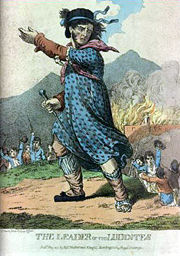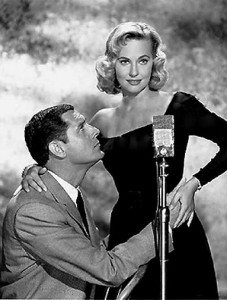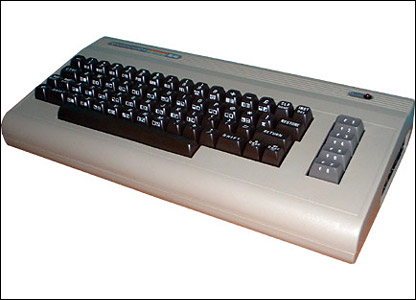Friday, September 12: Bandersnatches
EDITING WITH STONE AND CHISEL
by Steve Steinbock
 I never thought of myself as a Luddite. I don’t run out and purchase every new gadget that comes on the market, but neither do I shy away. Back in the day when I first heard talk of computers being used as writing tools—“word processing” they called it—I was pretty keen on the idea.
I never thought of myself as a Luddite. I don’t run out and purchase every new gadget that comes on the market, but neither do I shy away. Back in the day when I first heard talk of computers being used as writing tools—“word processing” they called it—I was pretty keen on the idea.
It must have been around 1982. Personal computers had been around for a few years already. I was in Grad School, and getting tired of using borrowed typewriters. That was when I was still popping on a stovetop. (Gee, maybe I am a Luddite). I bought a Commodore 64 and never looked back.
 Today there is a whole generation of adults that never had to use a typewriter. Imagine that. The idea that when you made a mistake, you either had to use White Out, cover the offending word with lots of #######, or tear out the page and retype it from the top.
Today there is a whole generation of adults that never had to use a typewriter. Imagine that. The idea that when you made a mistake, you either had to use White Out, cover the offending word with lots of #######, or tear out the page and retype it from the top.
Retyping, now that’s an archaic concept. Writers had to actually retype what they’d written. Each draft wasn’t just an edited version of a previous document, it was an entire retyping, and incorporating changes along the way. There’s something to be said about that. I recall that I often gained insights while retyping essays and stories for school. As I followed the earlier draft, I was free to make huge, drastic changes without feeling bad. I never had to hit a DELETE key because the old draft was still there. When I typed a new draft I was free to make something new.
Do I want to go back to the old way? Not a chance. I love my CUT and PASTE. If a paragraph fits better up here than it did down there, I no longer need to retype it. I just drag it to where I want it. We’ve gained a lot through technology. But I think we’ve hit the DELETE key on a lot of those old tricks, skills, and strategies.
But there are a couple aspects of writing for which I still use primitive technology. When it comes to planning, there’s nothing like a stack of 3X5 index cards and a kitchen table. I do the brainstorming, I shuffle and organize all the mental dandruff that came out on the cards, and before I know it, I have a plan. I’ve tried computer-based brainstorming and flowcharting tools, and none have worked for me. (If I’ve missed some great tool, please let me in on the secret).
There’s one other writing step that I do without a computer: editing. For me, it’s not even an option. It’s a habit that goes back to my days in Grad School with the Commodore 64. I do my work, I print it out, and I take pen in hand and go to work on it. I’ve killed more trees that way, but they understand. Having a pen in hand—usually a red pen, with an extra blueone to make notes—is part and parcel of the editing process. I remember in the old days, my dot-matrix printer would buzz-buzz-buzz back and forth on the ribbon-feed folded pages until a stack was sitting on the floor. I’d take the whole stack with me to Denny’s. (Here’s a secret, I used to leave the ribbon-feed strips attached because they gave me extra margin space on which to make notes).
I don’t go to Denny’s much anymore. And I haven’t bought ribbon-feed paper for decades. But I still take my printouts with me to a coffee shop and carve away at it with my red pen.
Short Barreled Gunn
Late at night, when my work is done and the rest of the family has gone to bed, I do my best video watching. I’m reviewing a box-set of Inspector Dalgliesh mysteries, based on the P.D. James novels. Those are pretty long movies, six hours apiece or more.
Today a pre-release set of more than a hundred episodes of M Squad arrived. I missed that program the first time around. Oh yeah, I hadn’t been born yet. It starred Lee Marvin as Chicago homicide detective Frank Ballinger. I’m looking forward to watching it, but I have a few more of the Dalgliesh stories to watch.
 Last week, having mailed all the Banacek DVDs back to NetFlix (and having not yet received my reviewing assignments) I began watching the first season of Peter Gunn. That was another show from before my time, or at least before I was old enough to be watching crime programs. Man, what a show!
Last week, having mailed all the Banacek DVDs back to NetFlix (and having not yet received my reviewing assignments) I began watching the first season of Peter Gunn. That was another show from before my time, or at least before I was old enough to be watching crime programs. Man, what a show!
Of course, the Mancini music is great. What I hadn’t realized was just how much music was a part of the program. A majority of the eight episodes on Disc One had jazz club storylines. Craig Stevens was great in the title role of a well-dressed PI (unlicensed?) who spends his free time at Mother’s Bar listening to his girlfriend Edie sing, and helping people out of trouble whenever he can. I hadn’t known that Herschel Bernardi was in every episode as Gunn’s friend Lt. Jacoby. Of those first eight episodes, only one (#6, “The Chinese Hangman”) was a dud. The rest, as one hipster character might say, just groove.
Six Degrees of Trivia
One of the episodes of M Squad depicted a Chicago cop taking a bribe. Mayer Richard Daley took great umbrage at that, and banned film and television production from that city. The ban was finally lifted in 1980 for the filming of The Blues Brothers, in which, among other things, Jake and Elwood’s band played the theme music to Peter Gunn.
See you in seven.





















My first desktop computer was a 128KB Macintosh, acquired in 1985. MacWrite is still my idea of a model word processing program. I never looked back.
I could never quite figure out whether Edie (the delectable Lola Albright) was actually as good a girl as she seemed or not. You could certainly understand what interested Gunn about her. She looked like the quintessential Hitchcock blonde and exuded a sultry sensuality when singing torch numbers in Mother’s waterfront dive, but offstage she acted like a Pollyanna.
Back in the 80s Isaac Asimov wrote about being on a cruise ship and getting an idea for a story, but he had no typewriter available. He used a pen and had an amazing revelation. “You know that sound writing makes? It’s not the writing. It’s the typewriter!”
I can’t edit on a computer either.
Hate to admit it, but I AM old enough to remember watching Peter Gunn and M Squad, and I loved ’em both. And even Richard Diamond, who got whacked on the head more than any other detective I ever saw.
After reading this column, I think I’ll find some of those DVDs myself, and relive part of my childhood.
I learned my craft on a manual typewriter (and used gallons of “Wite-Out” in the process as well). I recently had the chance to demonstrate to a group of 16-yr-old student-writers exactly how we old-timers had to work the typewriter, the carbon paper, the Wite Out, the manual return, the bell at the end of the line, and the task of retyping every single character, space and punctuation mark over a second time over on the final copy, working from the pencil-edited first draft.
One of the students blurted out “God! If *I* had to do that, I wouldn’t even try writing!”
A whole number of other students agreed with her … leaving me to just sigh and shake my head. (If that is their attitude, then Yes, they shouldn’t be writers. A real writer will write no matter how hard it is.)
I only occasionally still use my old manual typewriter to craft a story–I’m a confirmed computerized writer now–but I absolutely refuse to edit from the screen. I print out every story in hard copy, put it on a clipboard and let it hang on the wall for a week, and then go and edit it with a mechanical pencil (no time wasted in sharpening the point), then type in the edits onto the computer screen when I am done and make a fresh printout to mail in.
One side effect of the computer is that it makes it all too easy to just lob words wholesale onto the page–the slushpiles I have been wading through of late are filled with stories that are just too wordy, too long, for the tale they are trying to tell. I suspect that if the writer had to retype every single word a second time over, they might well have cut their verbiage and made their stories leaner and tighter as a result.
Ah, well. Maybe I’m just old.
These days “notebook” means the spiral-bound one I keep in my delivery truck. I use a (steam-powered) computer, but I love pens! AND speaking of t.v., the excellent Canadian mystery series “Seeing Things” has a bunch of episodes posted on You Tube. It’s well worth squinting at the screen!!
This is one show that has escaped me and I’m not sure why. Jazz is my music of choice and this show is always fondly remembered by critics and fans alike. It’s time to check it out. Thanks for the review…
Ah, Peter Gunn and early Mannix– TV noir. I can’t be certain if they really were in black and white because when I actually owned a television, it was usually B&W. Certainly solved that Turner colorizing problem.
You’ve driven me crazy though. The “ribbon-feed folded paper” has a industry name I’ve heard almost every business day since I was 19 and I can’t think of it. There was a variation we called green bar. We called the margin with the holes the “perf strip”, but I can’t think of the damned paper name! I need John’s help.
>I use a (steam-powered) computer…
(laughing) Hey, Jeff!
It’s disheartening to realize there are people too young to have seen Peter Gunn and M Squad when they were brand new. John Floyd helped a little by saying he watched them when he was a kid.
Man, those were second-generation shows and I was flirting with middle age when they first were on the air.
As for computers, I recall all the complaining when the reporters at my newspaper were told we were getting them in 1980. An hour after they arrived there would have been bloodshed if someone had tried to take them away. The biggest problem I see with computers is that now thousands of people who have no business writing anything more than a grocery list are now calling themselves “published authors.”